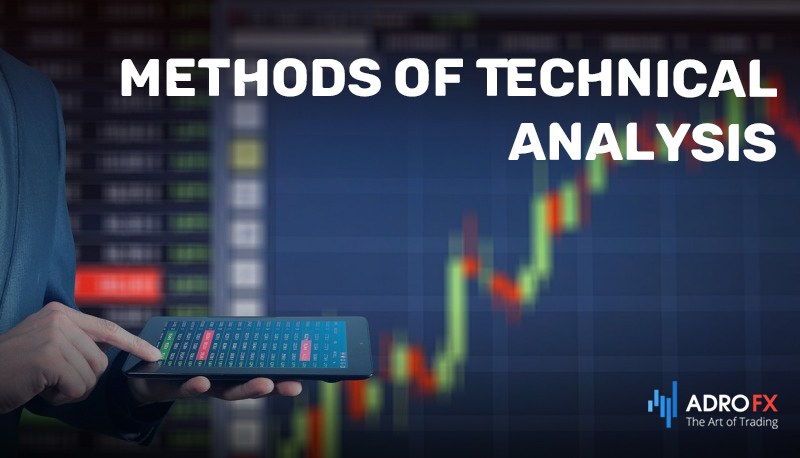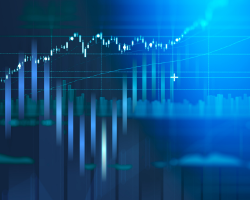Technical Analysis for Beginners: Yes, It Is Possible

Technical analysis in trading is used to make forecasts of price movements and helps to determine the exact entry and exit trading points. There are many analytical methods used by traders, which are able to track the statistical direction and speed of value and quotes in the market. In this article, we will provide insight into the fundamental aspects of technical analysis every beginner should know.
Understanding Technical Analysis
The technical market analysis utilizes past data to predict future behavior of an asset, with variables including prices and volumes generated in a particular market. This method is commonly used to analyze exchange-traded assets and forecast future price movements.
Fundamental analysis and technical analysis differ in their focus. While fundamental analysis centers on macroeconomic indicators, technical analysis prioritizes price chart analysis. Technical analysis has become increasingly popular due to its simplicity and versatility, as it can be applied to all markets, assets, and time periods. Additionally, technical analysis does not require extensive knowledge of finance.
To understand technical analysis, it is essential to explore its three fundamental principles. These principles include the belief that the market discounts everything, technical analysts do not need to focus on macroeconomic or political events, prices move in trends, and successful traders should trade in the direction of the trend.
- The market discounts everything
Technical analysts do not focus on macroeconomic and political events, because they believe that any world events will automatically be priced in.
Of course, spontaneous events such as a natural disaster or geopolitical tension can affect a certain market, but for technical analysts, the root causes themselves are not interesting as such. The only thing that matters is how they appear on the chart.
- Prices move in trends
The main tenet of technical analysis states that in the absence of a weighty irritant, the price is likely to move along with the trend.
In other words, technical analysts believe that prices always follow trends and that to trade successfully, traders must trade in the direction of the trend.
- Markets are cyclical
One of the most popular methods of technical analysis is based on the notion that history always repeats itself.
Simply put, the market is cyclic, and therefore by making a competent analysis of past price fluctuations, a technical analyst can predict future market movements.

Methods of Technical Analysis
Conventionally, the methods of technical analysis can be divided into the following:
- Graphical (classical) analysis. To determine the price fluctuations, the standard live price chart is used;
- Indicator (mathematical, algorithmic) analysis. The price change is predicted with the help of numerous technical indicators acting based on different mathematical functions;
- Analysis of volumes. The movement of prices in the market is determined based on studying the volumes of deals that are bound to a certain period;
- Candlestick analysis. The forecasting of price fluctuations is carried out on the basis of the movements of Japanese candlesticks on the chart.
Classical (graphical method of technical analysis)
This method of analysis is based solely on the representation of asset prices, which are folded into patterns. While the classical method does not use any indicators, most traders still use them for reassurance and to predict the moment of a trend reversal more accurately.
Graphical analysis is based on one of the tenets of technical analysis, which states that history repeats itself.
Of course, price patterns never exactly repeat one another, but it is beyond doubt that each pattern has certain rules. And this gives the possibility to use them for getting a trading signal.
The advantages of the classical analysis are:
- Simple and clear conditions of patterns formation;
- Equally high efficiency in different time frames;
- Independence from contradictory indicator readings (allows to see the trading signal where the indicators create only "noise").
Disadvantages are also present. In particular, they are:
- Subjectivity (although in general patterns are formed according to universal rules, traders, due to their subjective evaluation of the situation, may have completely different interpretations of what is seen on the chart);
- Low frequency of signals (the formation of patterns may take a long time).
Algorithmic (mathematical) methods of technical analysis
These are the methods of technical analysis, which use various technical indicators. What are they? These are algorithms developed by traders, based on certain mathematical formulas. Usually, their starting point is an average value of the market price for an asset over a certain period.
Advantages of using technical indicators:
- Trading dynamics (indicators are much faster than patterns and fundamental analysis);
- Indicators provide a lot of useful information (the main thing for the trader is to interpret it correctly);
- Indicators provide an early signal;
- More accurate determination of entry and exit points.
This method of analysis is very popular with modern traders. It allows you to immediately see the different probabilities of market movements, instead of having to calculate them using patterns yourself.
Volumes
In technical analysis, volume is the number of market assets that are traded during a certain period. Volumes are very important because, according to market analysts, changes in volume always precede price changes.
As history shows, periods of increase in the price of an exchange-traded asset are often preceded by an increase in its volume. If we are talking about the signals' relevance, the trade signals in periods of high volume are more reliable than in periods of low volume.
Simply speaking, the volume measures the intensity of the price trend. The higher the volume, the less likely the trend will change. Volumes can be useful for identifying both bullish and bearish trends.
For example, if volume decreases in an uptrend, it may mean that the uptrend is coming to an end, and a reversal may occur soon.
A precursor to growth, on the contrary, may be a sharp increase in volume in the background of a prolonged downtrend.
Candlestick analysis
The candlestick chart appeared in Japan several hundred years ago. Traders of that time first traced the relationship between the price of rice and the level of supply/demand for this product. They noticed that the emotions of traders strongly influence the market and displayed their measurements in the original chart.
A candlestick chart is a technical tool that collects data over several time frames and displays it as individual price bars. This charting technique has become very popular among traders because it is more informative than traditional bars or simple lines connecting the points to the closing prices.
Candlesticks build patterns that predict the direction of the price after the previous ones are completed.
Candlestick analysis is a must for every trader. After all, even on their own, candlesticks are a great way to get instant information about market psychology, and if you combine candlestick analysis with other forms of technical analysis, you can maximize your performance.

Pros and Cons of Technical Analysis
Technical analysis can be a valuable tool for traders looking to make informed trading decisions, but like any analysis method, it has both pros and cons. Here are some of the pros and cons of technical analysis:
Pros:
- Historical data: Technical analysis uses historical price data to identify patterns and trends, which can help traders make more informed trading decisions based on past market behavior;
- Objective: Technical analysis relies on objective data and mathematical calculations, which can help eliminate the emotional biases that can affect trading decisions;
- Easy to use: Technical analysis can be relatively easy to understand and use, even for beginner traders;
- Timing: Technical analysis can provide traders with insights into market timing and potential entry and exit points.
Cons:
- No guarantee of accuracy: Technical analysis is not foolproof, and it cannot predict future market movements with 100% accuracy;
- Limited information: Technical analysis is based solely on price and volume data, which means it does not take into account fundamental factors such as economic data or company news;
- Over-reliance: Traders who rely solely on technical analysis may miss important market developments that can affect their trades;
- Subjectivity: Technical analysis can be subject to interpretation, and different traders may analyze the same data in different ways.
Does Technical Analysis Really Work?
Forex technical analysis is a method of analyzing currency price movements using historical data and charts to identify patterns and trends. While there is no definitive answer as to whether technical analysis works, many traders and investors use it as a tool to make informed trading decisions.
The effectiveness of technical analysis largely depends on the trader's ability to interpret the data and apply it to their trading strategy. Technical analysis can be useful in identifying key levels of support and resistance, potential price breakouts, and other patterns that can help traders make profitable trades.
However, technical analysis is not perfect, and it should not be relied on as the sole method of making trading decisions. Market conditions can change quickly, and technical analysis may not always accurately predict future price movements. Additionally, traders should be cautious of over-reliance on technical indicators and should always consider other factors such as fundamental analysis and market sentiment.
Overall, forex technical analysis can be a useful tool for traders, but it should be used in conjunction with other analysis methods and with proper risk management.
Conclusion
In conclusion, technical analysis can be a useful tool for traders, but it should not be the only factor considered in making trading decisions. Traders should use technical analysis in conjunction with other analysis methods and with proper risk management to increase the likelihood of successful trades.
About AdroFx
Established in 2018, AdroFx is known for its high technology and its ability to deliver high-quality brokerage services in more than 200 countries around the world. AdroFx makes every effort to keep its customers satisfied and to meet all the trading needs of any trader. With the five types of trading accounts, we have all it takes to fit any traders` needs and styles. The company provides access to 115+ trading instruments, including currencies, metals, stocks, and cryptocurrencies, which make it possible to make the most out of trading on the financial markets. Considering all the above, AdroFx is the perfect variant for anyone who doesn't settle for less than the best.










